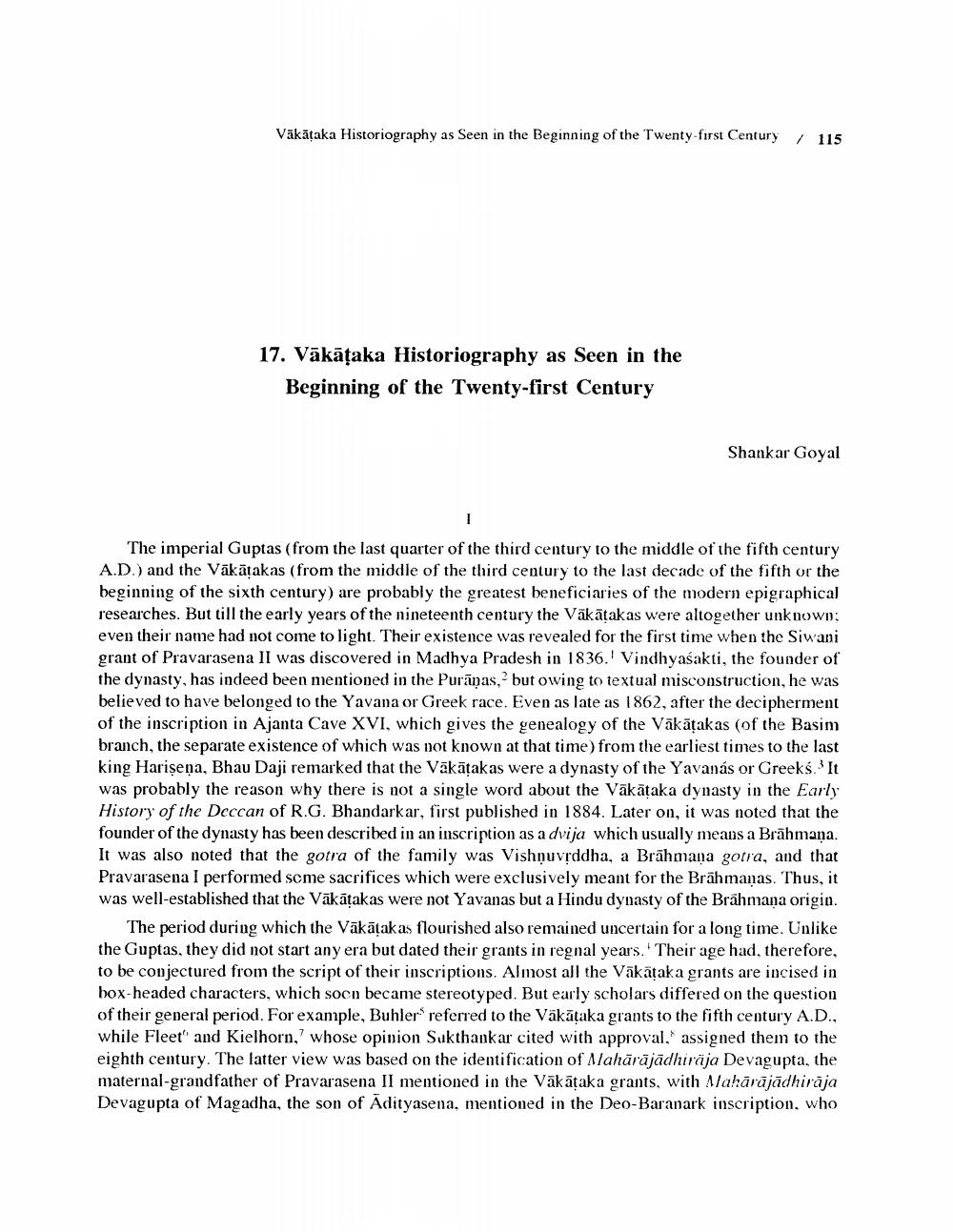________________
Vākāṭaka Historiography as Seen in the Beginning of the Twenty-first Century / 115
17. Vākātaka Historiography as Seen in the Beginning of the Twenty-first Century
Shankar Goyal
I
The imperial Guptas (from the last quarter of the third century to the middle of the fifth century A.D.) and the Vākāṭakas (from the middle of the third century to the last decade of the fifth or the beginning of the sixth century) are probably the greatest beneficiaries of the modern epigraphical researches. But till the early years of the nineteenth century the Vakatakas were altogether unknown: even their name had not come to light. Their existence was revealed for the first time when the Siwani grant of Pravarasena II was discovered in Madhya Pradesh in 1836. Vindhyasakti, the founder of the dynasty, has indeed been mentioned in the Puranas, but owing to textual misconstruction, he was believed to have belonged to the Yavana or Greek race. Even as late as 1862, after the decipherment of the inscription in Ajanta Cave XVI, which gives the genealogy of the Vakatakas (of the Basim branch, the separate existence of which was not known at that time) from the earliest times to the last king Hariṣena, Bhau Daji remarked that the Vākāṭakas were a dynasty of the Yavanás or Greeks. 3 It was probably the reason why there is not a single word about the Vākāṭaka dynasty in the Early History of the Deccan of R.G. Bhandarkar, first published in 1884. Later on, it was noted that the founder of the dynasty has been described in an inscription as a dvija which usually means a Brāhmaṇa. It was also noted that the gotra of the family was Vishnuvṛddha, a Brahmana gotra, and that Pravarasena I performed scme sacrifices which were exclusively meant for the Brahmanas. Thus, it was well-established that the Vākāṭakas were not Yavanas but a Hindu dynasty of the Brahmana origin.
The period during which the Vakatakas flourished also remained uncertain for a long time. Unlike the Guptas, they did not start any era but dated their grants in regnal years. Their age had, therefore, to be conjectured from the script of their inscriptions. Almost all the Vākāṭaka grants are incised in box-headed characters, which soon became stereotyped. But early scholars differed on the question of their general period. For example, Buhler referred to the Vākāṭaka grants to the fifth century A.D., while Fleet" and Kielhorn, whose opinion Sukthankar cited with approval, assigned them to the eighth century. The latter view was based on the identification of Mahārājādhirāja Devagupta, the maternal-grandfather of Pravarasena II mentioned in the Vakataka grants, with Maharajadhirāja Devagupta of Magadha, the son of Adityasena, mentioned in the Deo-Baranark inscription, who




